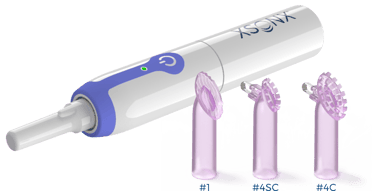
Revolutionizing Patient Care
Welcome to Revenue Doctors—dedicated to transforming the way wounds are treated and elevating patient care through innovation. We combine state-of-the-art healthcare solutions to help your practice deliver safer, faster, and more effective care for your patients.
Our wound care program harnesses the power of regenerative medicine, utilizing advanced allografts and the XSONX Wound Hygiene System. This innovative, no-scalpel approach reduces pain, accelerates healing, and is especially effective for chronic and contaminated wounds—providing medical professionals with superior results and a better patient experience.
In addition, Revenue Doctors proudly offers comprehensive Remote Patient Monitoring (RPM) services. Our RPM solutions enable real-time, proactive tracking of patient health from the comfort of their homes, improving outcomes, supporting chronic condition management, and increasing patient engagement.


Transforming Patient Care
with Healing, Monitoring,
and Innovation.
Our Mission: To increase Doctor Office Revenue in a time when insurance treatment payments are being reduced.
No Scalpel Required Debridement
Minimizing surgical risks and enhances patient safety.
Faster Recovery Times. Patients heal quicker, reducing hospital stays and follow-up visits.
Lower overall treatment costs due to efficient healing processes and patient monitoring.
Improved Patient Comfort
Cost-Effective Solutions
Covered by Medicare
Grafts are typically covered by Medicare Part B and most commercial insurance plans when medically necessary.
What are the benefits of Allografts?
1. Enhanced Healing Outcomes
Faster wound closure: Allografts accelerate the healing process, reducing healing time compared to standard wound care.
Tissue regeneration vs. repair: Unlike traditional dressings, allografts actively promote regeneration, leading to better structural integrity and long-term wound closure.
Reduction in amputations: Studies show that early intervention with amniotic membranes significantly lowers the rate of minor and major amputations, particularly in diabetic foot ulcers (DFUs).
2. Early Application = Better Results
Ideal for non-healing wounds: Allografts should be considered as early as 30 days into treatment if a wound shows no significant progress.
Earlier adoption reduces overall treatment costs, hospitalization, and readmission rates.
Competitive advantage for providers: Clinics that integrate allografts into their wound care protocol earlier position themselves as cutting-edge treatment centers.
3. Versatility & Broad Application
Allografts are effective in various wound types, including:
Hard-to-heal wounds (DFUs, venous leg ulcers, pressure ulcers)
Surgical wounds and incisions
Traumatic wounds and burns
Dermatological conditions (potential for expansion into additional specialties)
Outpatient settings, making them an attractive option for clinics and specialty wound centers.
7. Economic & Reimbursement Advantages
Lower overall healthcare costs:
Fewer emergency visits and readmissions
Reduced need for extended wound care treatments
Minimized long-term disability costs associated with non-healing wounds
5. Advanced Bioengineering & Science-Backed Innovation
Allografts incorporate the latest advancements in regenerative medicine, positioning them as cutting-edge solutions.
They contain growth factors, extracellular matrices, and bioactive proteins that stimulate natural healing.
They are more advanced than traditional wound dressings, which serve only as passive barriers.
6. Regulatory & Safety Assurance
Generally no risk of rejection or infection due to careful processing and preservation methods.
Allografts are bioresorbable and biocompatible, ensuring seamless integration into tissue.
4. Competitive Edge for Healthcare Providers
Stand out from competitors: Offering advanced wound care solutions attracts more referrals from general practitioners and specialists.
Improved patient satisfaction: Patients benefit from quicker healing, less pain, and better outcomes.
Positioning as a leader in regenerative medicine.
source: Best practice for wound repair and regeneration use of cellular, acellular and matrix-like products (CAMPs) | Journal of Wound Care
https://www.magonlinelibrary.com/doi/full/10.12968/jowc.2023.32.Sup4b.S1


What are the benefits of the XSONX Wound Hygiene System?


XSONX® Cordless system with Vibrational Debridement Technology (VDT) to powerfully clean and debride wounds
Patients experience less pain due to vibratory analgesia.
Precise and uniform debridement with a higher safety margin.
Increased wound bed stimulation and petechial micro bleeding.
Improved wound healing trajectory.
Superior wound bed preparation before tissue grafting.
XSONX® wound head vibrates more than 500 times per second. Not only is this faster than the human hand, but it stimulates the wound bed as you safely perform microlayer debridement.
XSONX® is easy-to-use, with less hassle and less mess.


XSONX How-to Video

Click here to see the XSONX tool in action (for medical professionals only).
This link contains sensitive imagery intended for medical professionals only. Viewer discretion is advised for non-medical audiences.
Remote Patient Monitoring (RPM)
Remote Patient Monitoring (RPM) is a healthcare service that uses digital devices—such as blood pressure monitors, glucose meters, and wearable sensors—to track patients’ vital signs and health conditions from the comfort of their own homes. These devices automatically transmit real-time health data to medical professionals, allowing providers to proactively manage both chronic and acute conditions while patients go about their daily lives.
What are the benefits of RPM?:
Early Intervention & Better Outcomes: RPM enables providers to quickly detect issues or changes in a patient’s condition, leading to faster, more targeted treatment and reduced emergency visits or hospitalizations.
Greater Convenience & Access: Patients can avoid unnecessary clinic visits, saving time and improving access to care, especially for those in rural or under served areas. This flexibility is particularly important for people with mobility challenges or chronic illnesses.
Enhanced Patient Engagement: RPM encourages patients to participate in their own care by giving them insight into their health data and daily progress, which boosts medication adherence and self-management.
Cost Savings: By reducing hospital re-admissions, emergency visits, and the need for in-person appointments, RPM lowers healthcare costs for both patients and providers.
Reduced Exposure to Infection: Minimizing in-person visits, especially for vulnerable populations, helps protect patients and staff from contagious illnesses.
RPM is transforming modern healthcare by making it possible to deliver continuous, patient-centered care—improving quality of life, optimizing outcomes, and delivering greater value across the healthcare spectrum.


Revolutionizing patient care with innovative solutions.
Keep INFORMED - Join our Email List
© 2025. revenuedr.com. All rights reserved.


Cell Phone:
(480) 234-2911